Permission to Eat & Cultivating the Satisfaction Factor
While the wellness diets of today are fixated on which macro nutrients to include and exclude, leading us further down the road of food paranoia and obsession, I encourage my clients to all but look the other way so they can see food through a different (kinder, yet still effective) lens. A lens that allows them to remember food serves not one, but two purposes: nourishment and satisfaction.
The science of Intuitive Eating - one paradigm I work through to help clients heal their relationship with food - tells us this: When we give ourselves PERMISSION to enjoy food (without guilt or shame) not only will our mind and body sync and naturally gravitate to a reasonable balance of nutritionally healthy and play foods, but we will stop STRUGGLING with food. Food will cease to have what Intuitive Eating calls the "forbidden fruit effect". Not only will our mental and emotional energy become available to focus on more fulfilling parts of daily life, but we’ll be more present to the full sensation of eating, thereby ending the meal more satisfied.
Beyond giving ourselves permission to eat and enjoy our food, here are two more strategies to increase meal satisfaction: mindful eating and prioritizing non-nutritional elements of a meal.
Mindful Eating
The purpose of mindful eating is to bring more awareness and intention to food choices and eating for greater satisfaction and mind-body balance. The Whole Nourishment philosophy does not promote Mindful Eating as a weight-loss or portion control tool. Below are three mindful eating tips helpful for everyday life and especially relevant in summer months when we're more distracted, eating in active settings like backyard barbecues, picnics, or weddings.
Eat sitting down. We're all guilty of standing or walking around while eating our potato salad and burger. But by doing so, we're activating our body, signaling for it to stay in alert mode. Sitting down, on the other hand, relaxes the nervous system and allows blood flow to be directed to the digestive tract. It also allows us to focus on the experience of eating (!) - to actually see and taste the food - rather than trying to balance the plate, walk gracefully and hold a conversation all while shoveling food in our mouths.
Scan the table of food options BEFORE picking up a plate. Too many options = choice overload. This results in urgently taking a bit of everything, an overcrowded plate and sensory overload. Instead, take a deliberate pause to walk around the table and see what looks good. Then go back for a plate and serve yourself with intention.
Eat adequately beforehand. We'll often "save up" for the special meal, eating less earlier in the day. But research shows restriction has a paradoxical rebound affect that triggers overeating and obsession with food. Instead, if we can go into a meal with a moderate appetite rather than the ravenous, I'm-losing-my-mind primal hunger, we'll feel more sane, less irritable and more in control of our choices.
Prioritize Non-Nutritional Elements in a Meal
Bringing the below elements to a meal enhances satisfaction and the novelty factor, both of which are important factors when trying to improve or maintain healthy eating habits. Several of the below components will be incorporated in any recipe on the blog as well as the Watermelon Lime Beet Salad pictured above.
Spice: the use of dried spices, fresh herbs and aromatics such as ginger, garlic, turmeric
Texture: contrasting crunchy, creamy, chewy, course, smooth
Temperature: We tend to equate healthy with cold, light and raw. Think salads, smoothies, yogurt, granola, wraps. But are you getting enough warm, cooked meals, especially in the spring, fall and winter seasons?
Novelty: How often do you try a new recipe, new spice or a new combination of familiar ingredients?

